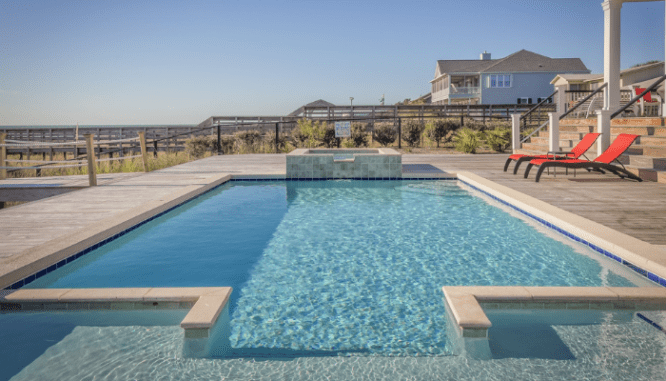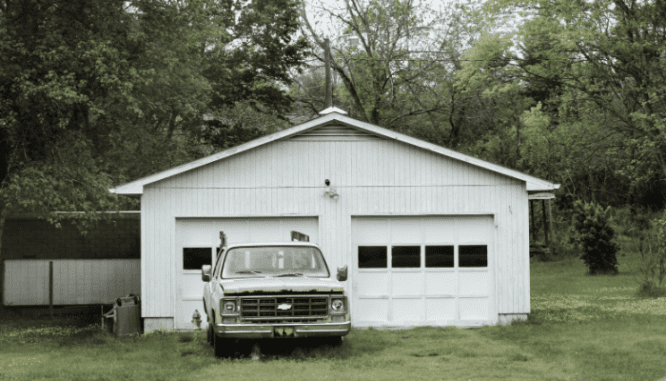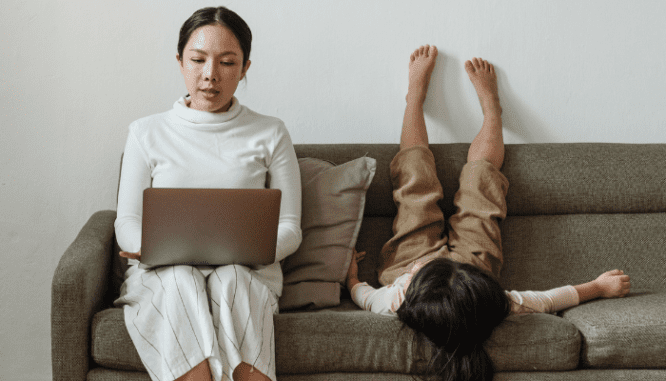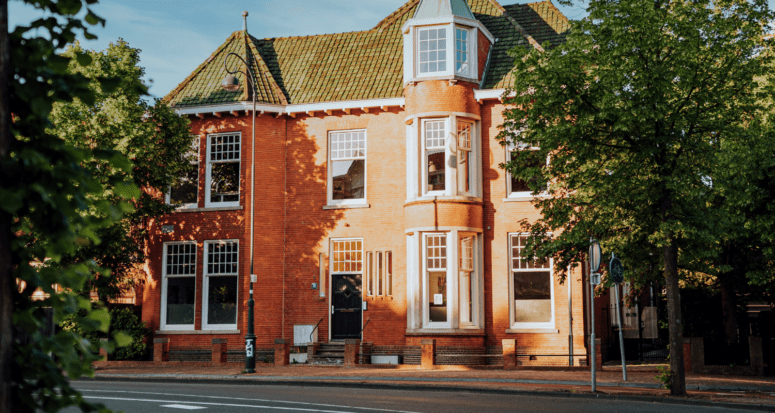6 Ways the Coronavirus Pandemic Will Reshape Home Design Forever
- Published on
- 6 min read
-
 Presley Attardo, Contributing AuthorClose
Presley Attardo, Contributing AuthorClose Presley Attardo Contributing Author
Presley Attardo Contributing AuthorPresley is a Seattle based writer covering interior design trends, home improvement, and market updates. She has lived in San Francisco, Los Angeles, Chicago, and Washington, D.C., giving her a unique perspective on the diversity of U.S. real estate.
-
 Caroline Feeney, Former Executive EditorClose
Caroline Feeney, Former Executive EditorClose Caroline Feeney Former Executive Editor
Caroline Feeney Former Executive EditorCaroline Feeney was previously HomeLight's Executive Editor / Director of Content. With 7 years of real estate reporting and editing experience, she previously managed content for Inman News and co-authored a book on real estate leadership. The Midwest native holds a master's from the Missouri School of Journalism and was formerly a real estate contributor for Forbes.
As the coronavirus pandemic continues to keep people homebound for long stretches of time, Americans are looking around at their current living space and saying, “This won’t do.”
Sales data from major retailers reveals that purchases for home improvement items increased 71% during the course of June, according to market research firm Rakuten Intelligence. The same month home renovation site Houzz reported a 58% year-over-year increase in home renovation service requests from homeowners.
By channeling our suspended travel, dining, and fitness budgets into our home design, we aspire to make our 24/7 living space make-up for all three. To aid you in this home optimization quest, HomeLight’s rounded up the six most in-demand home design improvements.
While we can’t promise these home improvements are as good as your canceled trip to Greece, we can assure you that they’ll help boost your home’s resale value thanks to insight from top real estate agent Allison Van Wig. Selling homes 47% quicker than the average agent in Lakewood, CA, Van Wig confirms these home design upgrades are at the top of buyers’ wishlists.

1. Designated home offices, equally functional and stylish
In HomeLight’s Top Agent Insights Report for Q2 2020, real estate agents rank a designated home office as the number one feature buyers want in their next home.
“Buyers want an office space. Especially, if they have children — they need a place where they can kind of get away and work,” emphasizes Van Wig, stating that many homeowners are converting formal family rooms, garages, and even storage sheds into home offices.
Search data for office furniture reflects homeowners’ evolution from working from their living and dining rooms to new, tailored workspaces. Searches for “desk” on Amazon rose 600% from July 11 to August 15, ranking as the second most-searched-for item behind face masks, according to Profitero.
Beyond functionality, homeowners want to bring style into their home office, a happy departure from the gray walls and fluorescent lights of the corporate building. Now, homeowners can fashion their work area to reflect their personal interests and aspirations and even incorporate a polished Zoom backdrop.
“The best thing is to have a wall of bookcases and to make sure that it’s arranged in a way that’s appealing. And there’s a secret to how you accessorize a bookcase,” shares Heather Higgins, principal and founder of Higgins Design Studio, Llc, who has appeared on HGTV’s Designer’s Challenge, as well as in magazines including The Wall Street Journal, OWN, and This Old House.
Higgins suggests lightly decorating open shelves with vases, books, and home accessories. She often draws styling inspiration from journalists’ work-from-home backgrounds, noticing that a little design goes a long way: “That’s the key basically — to not make whatever is behind you distracting so people are busy looking at behind you instead of you,” she advises.
Not only will investing in your office space help improve your workflow, but it’ll also bring you a fair return on investment when it’s time to sell. Our Top Agent Insights Report estimates that building a home office costs an average of $12,000, but recoups 87% that spend at resale.
2. Spacious outdoor living spaces
“A backyard that’s landscaped nicely with a patio and a place for the kids to play has way more value to it than it used to,” shares Van Wig. “People used to flip houses and they would leave a dead backyard. Now, if that backyard is restored to a nice park-like state, the house is selling for more money.”
Our recent Top Agent Insights Report confirms that backyards are a big win for buyers now, with agents ranking “a private and spacious outdoor area” as a top feature for buyers in 2020.
“A lot of people are making changes to their outdoor space. People need to get away from their work, so they want to have dinner outdoors,” confirms Higgins, noticing an increase in clients looking to revamp their backyards and terraces in New York City and surrounding areas.
CNBC reports that sales for outdoor furniture sales exploded at Overstock.com, Bed Bath & Beyond, and Frontgate this summer compared to the same time last year. CB2 also saw a spike in interest in outdoor furniture, reporting to Forbes that searches for outdoor furnishings were up 90% from last summer.

3. Swimming pools designed to lounge and lap
Going hand in hand with dialed-in outdoor living spaces, swimming pools are in demand as homeowners seek a splash zone to replace pandemic-closed beaches and public pools.
“Here in Southern California, a pool would normally get a seller $8,000 to $10,000 more. Now, we’re seeing $20,000 to $25,000 more in some cases,” Van Wig shares.
Buyers see pools as an opportunity to exercise, entertain, and relax, all from the comfort and safety of their backyards. For homeowners considering adding a pool, Van Wig recommends designing with this multi-purpose use in mind — meaning build a pool large enough for laps, but not so large that it compromises outdoor dining and play space.
4. Flex-space designated for exercise and storage
Almost immediately after the first wave of shelter-in-place orders in March, homeowners began swooping up at-home fitness equipment to maintain sanity, and in some cases, to balance out newfound bread-making hobbies.
Fitness equipment sales rose 130% in March from a year ago. Sales of exercise bikes were up 170%, free weights up 181%, and benches up 259%, according to the market research company NPD Group. Peloton, the premium brand pairing stationary bikes and treadmills with livestream subscriptions, reported their sales surged 66% from a year ago to $524.6 million in the fiscal third quarter.
Research indicates that the demand for at-home fitness rooms will continue long after shared sweat facilities reopen. In a recent survey by TD Ameritrade, 59% of Americans say they don’t plan on renewing their gym memberships once the pandemic is over. More than 56% of those surveyed attribute their gym departure to their switch to a “more affordable” at-home routine.
HomeLight’s Top Agent Insights report for Q3, a survey of more than 1,100 real estate agents across the country, found that 22% of top agents report private amenities like home gym and outdoor rec space as top priority to luxury homebuyers.
Sellers looking to boost their home’s marketability can cash-in on the at-home fitness craze by converting an existing room or finishing a basement or attic into a flex-space designed for exercise and storage.
Stick to a neutral, monochromatic color scheme with freshly painted walls and faux-wood laminate floors. For additional ground padding, top off a section of the flooring with rubber or vinyl mats.
Install a large wall mirror like this HD Wall Mirror Kit with Safety Backing to encourage proper exercise form and increase the appearance of room size. For extra enticing detail, add a ceiling fan to increase airflow for an average cost of $144 to $351.

5. Home additions to increase interior square footage
Surveyed real estate agents in our recent Top Agent Insights Report cite “a need for more space” as the #1 reason motivating people to move during the pandemic.
Homeowners who want more space in their current home choose to increase their square footage with a home addition. Houzz reports that homeowner queries about home extensions and additions were up 52% in June compared to the same time last year.
“Because of the pandemic, a lot of people are having small space issues, because they’re having their families moving back in with them and they have their offices moving in with them,” shares Higgins, commenting that even homeowners in the suburb feel stretched for space.
In the past 20 years, the number of 25- to 34-year-olds living with their parents nearly doubled, according to the Urban Institute. Pandemic-related furloughs and closed college campuses caused this number to jump 10% this spring, starting in April.
Van Wig comments that some of her clients have opted for partial to full garage conversions instead of a full home addition:
“I had one client with a two-car detached garage. They drywalled half, put an air conditioner in there, put patio paint on the garage floor, and then put a sofa, foosball table, and TV in there, and that’s the kids’ entertainment area.”
According to HomeAdvisor, homeowners spent on average $11,520 to $28,000 on 12 x 12 room additions and $32,000 to $80,000 on 20 x 20 room additions. Garage conversions cost less, with an average price tag just under $10,000, though real estate agents only recommend finishing a garage if a home has additional covered car parking.
6. Solar energy for lower utility bills
While those working from home save on commuting and dine-out lunches, they spend significantly more on electricity, especially those running air conditioning for an extra 8 hours a day. Following months of spiked energy bills, many homeowners are now seeing the benefits of a solar-powered home.
“Solar has been getting more and more popular over the last five or six years, but buyers really didn’t understand it. Now they’re beginning to understand it because they’re home more using more electricity. So more and more buyers are saying, ‘Well if the house has solar, that would be really nice,’” notes Van Wig.
In California, residential energy use has risen 15% to 20% during the pandemic compared to the same period last year.
With local electricity rates running around $0.12 per kilowatt-hour, the average solar electricity system would save a homeowner about $500 per year before the pandemic, according to the U.S. Department of Energy; that translates to northwards of $600 in savings for households with increased energy use from shelter-in-place lifestyles.
“I have a listing coming up now and their electricity bill is like $3 a month because they have solar. That’s gonna be a big thing for people that stay home all the time,” Van Wig comments.
Homeowners considering switching to solar should act fast to claim the 26% federal solar tax credit, which will decrease to 22% in 2021 and cease thereafter. To estimate how much your household could save on energy with solar panels, look up your city on SolarReview’s average monthly and lifetime solar savings chart and solar savings estimator.

Update your home to enhance the new normal
The coronavirus pandemic has put a spotlight on home design and shown just how much functional spaces can improve our daily lives. With a few key home improvements, you can live more comfortably during and after the era of social distancing.
Header Image Source: (Alex Dudar / Unsplash)
